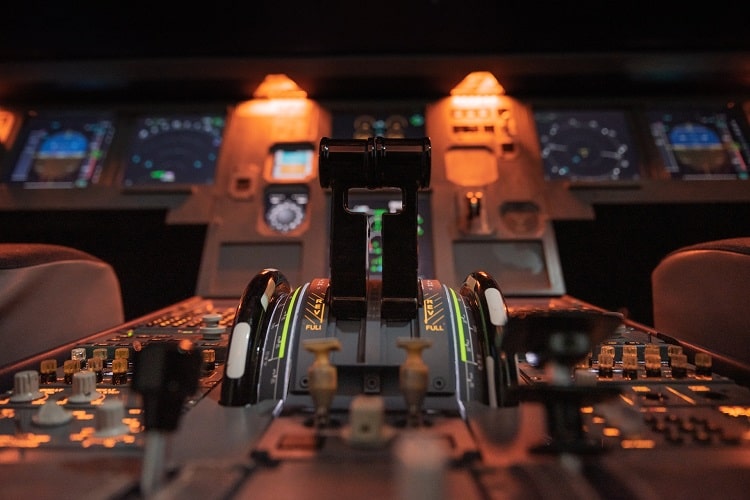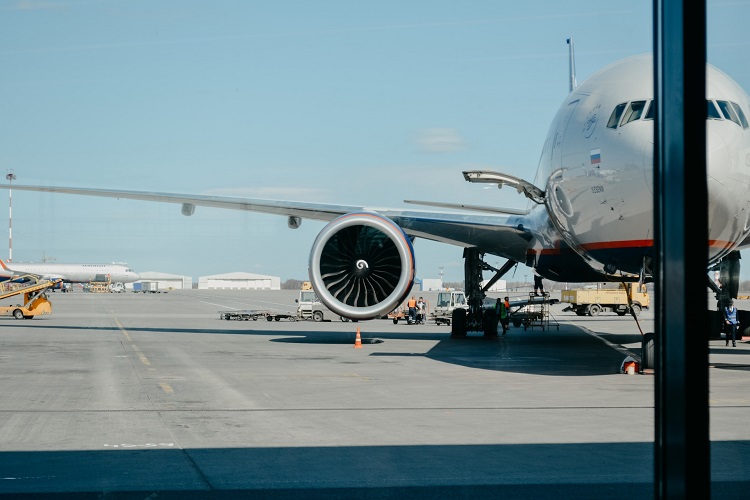Aviation is a critical industry that operates with stringent requirements for safety and efficiency. In recent years, the integration of Artificial Intelligence (AI) has brought about a revolutionary shift in how the aviation sector operates.
AI, which involves the development of intelligent machines capable of human-like tasks, has empowered airlines and aviation authorities to elevate safety standards, optimize efficiency, and minimize costs through automation, data analysis, and decision-making support.
AI in Aviation
AI in aviation involves the use of intelligent algorithms and systems to automate various processes, analyze vast amounts of data, and assist in decision-making. It encompasses a range of technologies, including machine learning, natural language processing, computer vision, and predictive analytics.
These AI technologies are leveraged to tackle complex challenges in aviation, such as predictive maintenance, flight operations optimization, air traffic management, safety analysis, and pilot training.
Importance of Aviation Safety
Aviation safety is of paramount importance in the industry. The lives of millions of passengers, as well as the reputation and financial stability of airlines, depend on maintaining the highest safety standards. Any compromise in safety can lead to devastating consequences. This is where AI plays a crucial role. By integrating AI into aviation safety practices, the industry can significantly enhance safety measures and mitigate potential risks.
The introduction of AI enables airlines to proactively identify and address maintenance issues through predictive maintenance algorithms. By analyzing data from sensors and aircraft systems, AI can detect patterns and indicators of potential failures, allowing for preventive maintenance before critical components malfunction. This reduces the likelihood of in-flight disruptions and unplanned maintenance, ultimately ensuring safer and more reliable operations.
Furthermore, AI enhances flight operations by optimizing flight routes, fuel consumption, and flight plans. Real-time data analysis using AI algorithms empowers pilots and flight dispatchers to make informed decisions that increase efficiency and improve safety. By leveraging AI’s capabilities, airlines can achieve better fuel efficiency, reduce emissions, and minimize the risk of human error.
In air traffic management, AI systems provide valuable insights and predictions to prevent congestion, delays, and disruptions. By analyzing real-time data, AI can assist air traffic controllers in making more informed decisions regarding routing, scheduling, and managing traffic flow. This helps to ensure smoother operations, reduce the risk of accidents, and enhance overall safety.
Safety analysis is another critical aspect where AI shines. By analyzing vast amounts of data from flight recorders, weather reports, and various other sources, AI algorithms can identify patterns and trends that indicate potential safety hazards. This allows aviation authorities to take proactive measures to mitigate risks and prevent accidents before they occur.
Moreover, AI plays a significant role in pilot training. It provides simulated scenarios that allow pilots to practice emergency procedures and critical tasks in a safe and controlled environment. By leveraging AI-based simulations, pilots can enhance their skills, develop the ability to handle challenging situations and respond effectively in emergencies. This training approach significantly contributes to improving aviation safety.

Applications of AI in Aviation and Safety
Predictive Maintenance
Predictive maintenance is a crucial application of AI in aviation safety. By harnessing AI algorithms, airlines can proactively identify potential component failures and address them before they lead to critical issues. AI systems analyze data from sensors, aircraft systems, and historical maintenance records to detect patterns and indicators of potential failures. This data-driven approach enables airlines to predict maintenance requirements accurately and schedule proactive maintenance actions. The benefits of predictive maintenance are significant, including:
- Improved Reliability: By addressing maintenance needs before they escalate into failures, predictive maintenance ensures the reliability of aircraft systems. This reduces the likelihood of in-flight disruptions and unplanned maintenance, enhancing passenger safety and satisfaction.
- Cost Savings: Proactive maintenance allows airlines to avoid costly repairs caused by unexpected failures. By identifying issues in advance, airlines can plan and allocate resources efficiently, resulting in cost savings in both maintenance and operational areas.
Flight Operations
AI optimizes flight operations by providing valuable insights and decision-making support for pilots and dispatchers. The key applications of AI in flight operations include:
- Optimization of Flight Routes, Fuel Consumption, and Flight Plans: AI algorithms analyze real-time data, including weather conditions, air traffic congestion, and aircraft performance parameters, to optimize flight routes. By considering factors such as fuel efficiency, time constraints, and safety, AI systems generate optimal flight plans that reduce fuel consumption, emissions, and overall operational costs.
- Real-time Data Analysis and Decision-Making Support: AI systems process and analyze vast amounts of real-time data from various sources, such as weather reports, air traffic information, and aircraft sensor data. This analysis enables pilots and dispatchers to make informed decisions promptly. AI can provide recommendations regarding alternative routes, diversion options, or changes in flight plans to avoid hazards, optimize efficiency, and enhance safety.
Air Traffic Management
AI has a significant impact on air traffic management, ensuring efficient and safe operations. The applications of AI in this domain include:
- Predicting and Preventing Congestion, Delays, and Disruptions: By analyzing real-time data from multiple sources, including air traffic, weather conditions, and airport capacity, AI systems can predict potential congestion, delays, or disruptions. This foresight allows air traffic controllers to proactively manage traffic flow, adjust flight schedules, and reroute aircraft to prevent or mitigate adverse effects on efficiency and safety.
- Enhancing Decision-Making for Air Traffic Controllers: AI-based tools provide air traffic controllers with real-time information and insights necessary for making informed decisions. By considering various factors, such as weather conditions, aircraft performance, and airspace restrictions, AI systems support controllers in optimizing routes, managing traffic flow, and ensuring the safe and efficient movement of aircraft.
Safety Analysis
AI is instrumental in analyzing vast amounts of data from diverse sources to identify potential safety hazards and mitigate risks. Key aspects of AI applications in safety analysis include:
- Utilizing AI to Analyze Data for Hazard Identification: AI algorithms analyze data from flight recorders, maintenance records, pilot reports, weather data, and other relevant sources to identify patterns and trends that may indicate potential safety hazards. By processing and interpreting this data, AI systems can detect anomalies, deviations, or potential risks that might otherwise go unnoticed.
- Mitigating Risks through Pattern Recognition and Trend Analysis: AI’s ability to analyze large datasets facilitates the identification of patterns and trends related to safety risks. By detecting patterns of incidents, near-misses, or operational errors, AI systems help aviation authorities and airlines develop targeted strategies and interventions to mitigate risks and enhance safety measures.
Pilot Training
AI plays a crucial role in pilot training, providing simulated scenarios for practicing emergency procedures and critical tasks. Key aspects of AI in pilot training include:
- AI-Based Simulation for Emergency Procedures and Critical Tasks: AI-powered simulators replicate real-world scenarios, allowing pilots to practice emergency procedures, decision-making under stress, and critical tasks in a safe and controlled environment. These simulations provide invaluable opportunities for pilots to refine their skills, improve their situational awareness, and develop the ability to handle challenging situations effectively.
- Skill Development and Preparedness for Challenging Situations: AI-based training tools provide personalized feedback and performance metrics to pilots, enabling them to track their progress, identify areas for improvement, and enhance their skills. By repeatedly practicing in realistic simulated environments, pilots gain experience and preparedness for various challenging scenarios they may encounter during actual flights.
Benefits and Impacts of AI on Aviation Safety
Enhanced Safety
The integration of AI in aviation safety brings numerous benefits that enhance the overall safety of the industry. The key impacts include:
- Early Detection and Prevention of Potential Safety Hazards: AI algorithms excel at analyzing vast amounts of data from various sources, enabling early detection of potential safety hazards. By identifying patterns, anomalies, and deviations in real-time data, AI systems can alert aviation authorities and airlines to take proactive measures. This early detection and prevention significantly reduce the risk of accidents, incidents, and safety-related incidents.
- Improved Decision-Making Based on Real-Time Data Analysis: AI enables real-time data analysis, allowing aviation professionals to make informed decisions promptly. By processing and interpreting complex data sets, AI systems provide valuable insights that aid in decision-making. Pilots, air traffic controllers, and maintenance personnel can leverage this real-time analysis to respond effectively to dynamic situations and ensure the safety of operations.
Increased Efficiency
AI not only enhances safety but also brings significant improvements in efficiency throughout the aviation industry. The impacts of AI on efficiency include:
- Optimization of Maintenance Processes and Resource Allocation: AI-driven predictive maintenance enables airlines to optimize maintenance processes by identifying and addressing issues before they cause failures. This proactive approach minimizes aircraft downtime, reduces the need for unscheduled maintenance, and maximizes aircraft availability. Additionally, AI algorithms assist in resource allocation, ensuring that maintenance personnel, spare parts, and tools are efficiently utilized.
- Improved Flight Operations and Air Traffic Management: AI optimizes flight operations by analyzing real-time data and providing recommendations for route optimization, fuel consumption, and flight plans. This optimization results in reduced fuel consumption, lower emissions, and overall cost savings for airlines. Similarly, AI enhances air traffic management by predicting and preventing congestion, delays, and disruptions. By efficiently managing air traffic flow, AI systems reduce delays, improve on-time performance, and enhance overall efficiency.
Cost Reduction
The integration of AI in aviation safety brings about cost reductions by minimizing in-flight disruptions, unplanned maintenance, and operational inefficiencies. The key impacts include:
- Minimized In-flight Disruptions and Unplanned Maintenance: Predictive maintenance powered by AI algorithms helps identify potential component failures before they occur. By addressing maintenance needs proactively, airlines can avoid costly in-flight disruptions, flight diversions, or cancellations caused by unexpected failures. This results in cost savings, improved reliability, and enhanced passenger satisfaction.
- Streamlined Operations and Reduced Delays: AI’s ability to analyze real-time data and provide decision-making support enables airlines to streamline their operations. By optimizing flight routes, fuel consumption, and flight plans, AI systems reduce delays, improve aircraft utilization, and enhance operational efficiency. This leads to cost savings and improved on-time performance for airlines.

Challenges and Considerations
The integration of AI in aviation safety brings about transformative benefits, but it also presents several challenges and considerations that need to be addressed. These challenges are crucial to ensure the responsible and effective implementation of AI in aviation. The key challenges and considerations include:
Data Privacy and Security
- Protecting Sensitive Data in AI Applications: AI systems rely on vast amounts of data, including sensitive information such as passenger records, maintenance logs, and air traffic data. It is essential to implement robust data privacy and security measures to protect this information from unauthorized access, breaches, or misuse. Encryption, access controls, and secure data storage protocols should be implemented to safeguard sensitive data.
- Ensuring Compliance with Regulations: The aviation industry is subject to strict regulations regarding data privacy and security, such as the General Data Protection Regulation (GDPR) and regional aviation regulatory requirements. Adhering to these regulations is crucial when implementing AI in aviation to ensure compliance and maintain trust among passengers, stakeholders, and regulatory authorities.
Ethical Implications
- Fairness, Transparency, and Accountability in AI Decision-Making: AI algorithms should be designed and trained to ensure fairness, transparency, and accountability in their decision-making processes. Bias detection and mitigation strategies should be implemented to prevent discriminatory outcomes. Transparent AI systems with explainable decision-making processes are crucial to building trust and understanding among stakeholders.
- Human Oversight and Responsibility in Aviation Safety: While AI brings significant advancements in aviation safety, it is important to maintain human oversight and responsibility. Human pilots, air traffic controllers, and maintenance personnel play critical roles in decision-making and handling unforeseen situations. Balancing the benefits of AI with the need for human judgment and intervention is crucial to maintain a safe and reliable aviation system.
Integration and Adoption
- Overcoming Barriers to Implementation and Acceptance: The integration of AI in aviation safety requires overcoming various barriers, including technical, regulatory, and cultural factors. The aviation industry has complex infrastructures, legacy systems, and established processes, which can pose challenges when implementing AI technologies. Education, training, and awareness programs are necessary to facilitate the acceptance and adoption of AI among aviation professionals.
- Collaboration Between Stakeholders for Successful Integration: Successful integration of AI in aviation safety requires collaboration among stakeholders, including airlines, regulatory authorities, technology providers, and aviation professionals. It is essential to establish partnerships and cooperation to ensure the seamless integration, standardization, and scalability of AI solutions. Collaboration fosters knowledge sharing, best practices, and the collective effort needed to overcome challenges and maximize the benefits of AI.
Future Trends and Outlook
The future of AI in aviation safety holds great promise and potential. Several trends and developments are shaping the future landscape:
- Advancements in AI Technology for Aviation Safety: Ongoing advancements in AI technology, including machine learning, natural language processing, and computer vision, will continue to enhance the capabilities of AI systems in aviation safety. AI algorithms will become more sophisticated, enabling better predictive capabilities, faster data processing, and improved decision-making support.
- Integration of AI with Other Emerging Technologies: The integration of AI with other emerging technologies, such as drones, autonomous systems, and the Internet of Things (IoT), will further enhance aviation safety. AI-powered drones can assist in surveillance, inspections, and emergency response. Autonomous systems integrated with AI can enable self-monitoring and self-correction of aircraft systems, improving operational reliability and safety.
- Regulatory Considerations and Standards for AI in Aviation: As AI becomes more prevalent in aviation, regulatory bodies will develop specific guidelines and standards to govern its usage. Clear regulations and standards will address safety, security, privacy, and ethical concerns. It is crucial for the aviation industry to actively participate in the development of these regulations and ensure responsible and compliant use of AI technologies.
- Potential Challenges and Opportunities for Further Development: While AI brings numerous benefits, challenges such as algorithm bias, cybersecurity risks, and regulatory complexities may arise. Addressing these challenges will require continuous research, development, and collaboration between academia, industry, and regulatory bodies. However, overcoming these challenges presents opportunities for innovation, improved safety, and enhanced efficiency in the aviation industry.
Addressing challenges related to data privacy, ethics, integration, and adoption is vital for the successful implementation of AI in aviation safety. Looking ahead, advancements in AI technology, integration with other emerging technologies, and the establishment of regulatory frameworks will shape the future of AI in aviation safety. By leveraging these trends and addressing potential challenges, the aviation industry can continue to enhance safety, improve efficiency, and deliver a seamless and reliable travel experience for passengers worldwide.
References:
- Njolomole Z, Kalimuthu R (2021) Artificial Intelligence, IoT and their Future on Aviation Safety. J Inform Tech Softw Eng. S5: 002.
- Hunt W. The flight to safety-critical AI: Lessons in AI safety from the aviation industry.
- Stelmach A. Modeling of selected aircraft flight phases using data from flight data recorder. Arch Transp. 2011;23(4):541.
- Hernández-Orallo J, Martínez-Plumed F, Avin S. Surveying Safety-relevant AI characteristics. InSafeAI. 2019.
- Barnett A. Aviation safety: A whole new world? Transp Sci. 2020;54(1):84-96.
- Enabling Safety from Data: Machine Learning/Artificial Intelligence for In-Time Aviation Safety, Nikunj C. Oza, Ph.D., Chad Stephens, NASA System-Wide Safety Project
- Pérez-Castán JA, Pérez Sanz L, Fernández-Castellano M, Radišić T, Samardžić K, Tukarić I. Learning Assurance Analysis for Further Certification Process of Machine Learning Techniques: Case-Study Air Traffic Conflict Detection Predictor. Sensors (Basel). 2022;22(19):7680. Published 2022 Oct 10. doi:10.3390/s22197680


